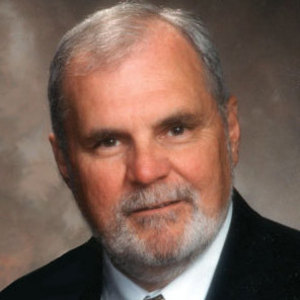What $6 trillion could do for renewable energy

December 24, 2015
BY Mike Bryan
Politics is so political and being politically correct is not always easy. So, I have generally tried to avoid issues in this small space that are highly politically charged and can generate vastly different views. But there is something that has been on my mind for some time now and the terrorist attacks in Paris and other things compel me to comment.
Estimates are that by the time all is said and done the U.S. will have spent nearly $6 trillion on wars in Afghanistan and Iraq. I know there are many varying opinions as to whether or not we should have gone into those countries. Politicians often change their position depending on their audience and most of us can now play Monday morning quarterback as to the efficacy of those wars. Talking about money—and not the human suffering of our servicemen and women and the people of those countries—seems extraordinarily shallow. However, the good we could have accomplished in the world with $6 trillion staggers the imagination.
Arguably, we would not have spent $6 trillion dollars had we not been involved in these wars. Think about what that money could have done not only in terms of economic, environmental and social aid to countries in need, but from a very pragmatic perspective, the economic activity it could have created for American technology companies.
America has invested billions of dollars in ethanol production alone and hundreds of billions in renewable energy as a whole. We marvel at the economic and environmental impact. Extrapolate the effects of spending a thousand times that amount on developing renewable energy projects around the world. The jobs created, the goodwill generated, the standard of living raised, money to build schools and hospitals, reduced oil and coal imports of oil, greater incentives for a stronger agricultural base and a cleaner environment. Everything that renewable energy has created here in America could be created in countries where it is desperately needed and where the ancillary benefits would have an even greater impact on people’s lives.
Of the seven-plus billion people living on this planet, 3 billion people live on less than $2.50 a day. That’s 40 percent of the world’s population! Eighty percent of the world’s population live on less than $10 per day. At that level of income, you’re unable to invest in anything, you cannot raise yourself out of poverty, and you can only exist from one day to the next. It’s a vicious circle and unless something changes, it’s your reality for life.
Renewable energy projects on a global scale would not eliminate poverty, but it could go much further than simply pouring foreign aid money into countries with little idea or control over where it goes or how it is used. Besides, funding global renewable energy projects can be directly tied to the use of U.S. companies to complete the projects. I’m not talking about matching funds, I’m talking about fully funding, building, managing and possibly owning those facilities until they can be self-managed and owned, sharing agricultural, environmental and production technology while having direct oversight on how the funds are spent.
It’s probably a pipe dream. But when I watch the news and see the level of hatred and despair in the world, I can’t help but wonder what that $6 trillion dollars could have bought.
That’s the way I see it.
Author: Mike Bryan
Chairman, BBI International
mbryan@bbiinternational.com
Advertisement
Advertisement
Related Stories
The U.S. Energy Information Administration maintained its forecast for 2025 and 2026 biodiesel, renewable diesel and sustainable aviation fuel (SAF) production in its latest Short-Term Energy Outlook, released July 8.
XCF Global Inc. on July 10 shared its strategic plan to invest close to $1 billion in developing a network of SAF production facilities, expanding its U.S. footprint, and advancing its international growth strategy.
U.S. fuel ethanol capacity fell slightly in April, while biodiesel and renewable diesel capacity held steady, according to data released by the U.S. EIA on June 30. Feedstock consumption was down when compared to the previous month.
XCF Global Inc. on July 8 provided a production update on its flagship New Rise Reno facility, underscoring that the plant has successfully produced SAF, renewable diesel, and renewable naphtha during its initial ramp-up.
The U.S. EPA on July 8 hosted virtual public hearing to gather input on the agency’s recently released proposed rule to set 2026 and 2027 RFS RVOs. Members of the biofuel industry were among those to offer testimony during the event.
Upcoming Events










